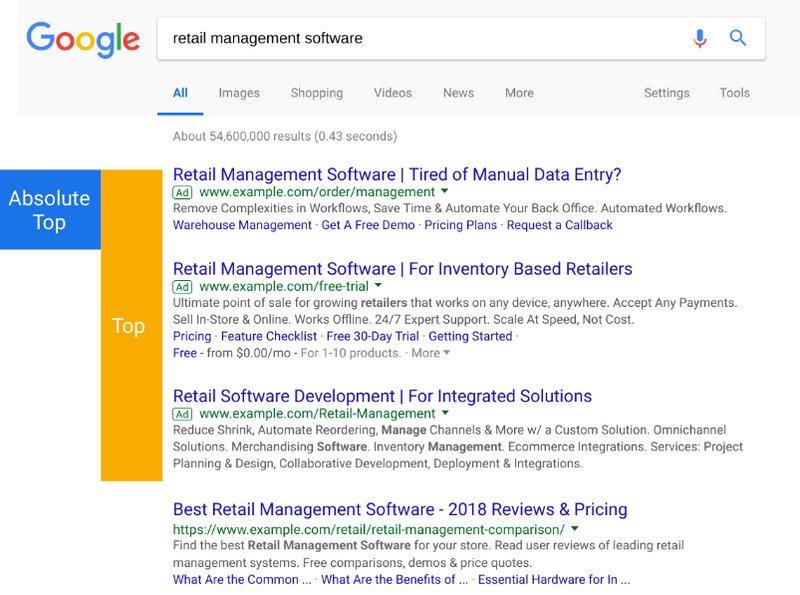In an assumed step toward prioritizing automated bidding strategies, Google has officially phased out their Average Position Column in Google Ads. This is the first week since the data’s removal, and brands are considering ways to supplement this lost metric.
Though a seemingly innocuous change, it is important to understand how this switch may have affected your account.
How Advertisers Utilized Average Position Data
In order to determine what replacement strategy is best suited for your company, it’s essential to know how Average Position was used to influence your bid settings.
Within the Google Ads auction, advertisements are ranked based off of their quality score and bid value. This ad rank determines where on the results page your ad will be displayed, also known as its position.
Despite Google’s belief that the metric was no longer of use, advertisers had been using the ranking to evaluate campaign success, especially those in popular industries. Average Position served as a measurement tool to help identify where adjustments were needed within an account.
What Else Has Been Disabled?
If you had been using any Google Ads scripts associated with Average Position, check to make sure that the change hasn’t disrupted any of your workflows.
Similarly to the scripts, any saved rules, custom columns, or running reports that previously utilized Average Position will also have the metric removed from those dashboards.
What’s Replaced Google’s Average Position?
Google has provided advertisers with two replacement metrics, Impression (Absolute Top)% and Impression (Top)%. You may have already seen and begun utilizing these new tools since their original release last year.
Both of these new statistics work to show businesses what percentage of their ads are displaying both at the top of the page and the absolute top. Sound redundant? Here’s what it looks like.

(Image Provided by Google)
Google claims that both of these data points give you a better understanding of just where your ads are showing compared to the now eliminated Average Position. Which, as many advertisers agree, holds water since you can now see the placement of your ads versus it’s ranking compared to your competition.
Since the search results page is all about prime real estate, knowing that you are, in fact, showing above the organic results is a powerful insight.
Bidding by Target Impression Share
When these new metrics became available, Google also rolled out their Target Impression Share bidding strategy. Best suited for awareness campaigns, this new strategy allows advertisers to bid on the particular placement of their ads (Absolute Top of Page, Top of Page, or Anywhere on Page).
To start a Target Impression Share campaign, advertisers set a goal impression share percentage that the Google algorithm will use to adjust bids appropriately.
As always, you’ll want to set at max CPC budget in order to prevent the campaigns from spending too much on any one click. Google cautions against setting these maximums too low for fear of stifling performance. However, it is best practice to start conservatively and slowly increase the CPC until you begin receiving the volume you’re looking for.
As a whole, Google’s elimination of the Average Position column isn’t radical news. However, it does serve as a clear warning it’s time for advertisers to embrace automated bidding strategies.
If you are in search of a partner to help you build effective paid search campaigns and guide you through these changes, reach out to our team today.
